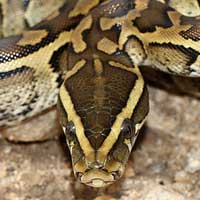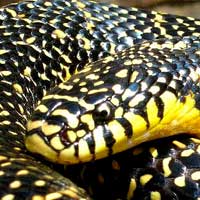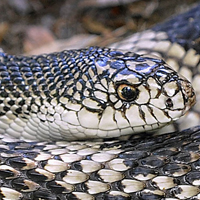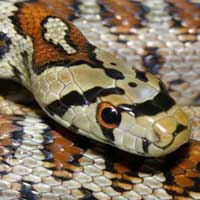Exploring the Fascinating World of the African Rock Python
The scientific name of the Rock Python is Python sebae, and it belongs to the Pythonidae family, which includes non-venomous constricting snakes commonly referred to as pythons.
Scientific Name: Python sebae
Snake Family: Pythonidae

Introduction to the African Rock Python
The Rock Python (Python sebae), also known as the African Rock Python, is one of the largest snake species in the world. Native to sub-Saharan Africa, this non-venomous constrictor is known for its incredible strength, beautiful patterns, and impressive size. While its size and power make it unsuitable for novice keepers, experienced handlers find the Rock Python to be a rewarding challenge. This guide covers everything you need to know about this magnificent species, from its habitat and diet to care and handling tips.
Where Does the Rock Python Live?
The Rock Python is highly adaptable and thrives in a variety of habitats across sub-Saharan Africa. Understanding its natural environment is key to replicating its needs in captivity.
- Geographic Range: Found throughout sub-Saharan Africa, from Senegal to Ethiopia and down to South Africa.
- Preferred Habitat: Grasslands, savannas, forests, and near water bodies such as rivers and lakes.
- Climate: Warm and humid, with temperatures ranging between 75°F and 90°F.
| Region | Habitat Type | Key Features |
|---|---|---|
| West Africa | Grasslands | Open spaces, moderate cover |
| Central Africa | Rainforests | Dense foliage, high humidity |
| Southern Africa | Savannas | Warm climate, ample prey |
Diet and Feeding Habits of the Rock Python
The Rock Python is a carnivorous predator that preys on a wide variety of animals in the wild. In captivity, its feeding requirements are straightforward but demand caution due to its size.
- Natural Diet: Large mammals, birds, and reptiles, including antelope and small crocodiles.
- Feeding Frequency:
- Juveniles: Every 5-7 days to support rapid growth.
- Adults: Every 2-4 weeks depending on size and prey availability.
- Captive Feeding Tips:
- Offer pre-killed, thawed prey such as rabbits or large rats.
- Feed in a separate enclosure to prevent substrate ingestion.
- Ensure prey size matches the girth of the python.
Behavior and Temperament of the Rock Python
The Rock Python is known for its strength and confidence, traits that demand respect from handlers. Understanding its behavior is essential for safe interactions.
- Activity Patterns: Primarily nocturnal, but may bask during the day in cooler months.
- Defensive Behavior: Can be defensive and may hiss or strike if threatened.
- Interaction with Humans: Requires experienced handling due to its size and power.
Patience and regular handling are key to building trust with this impressive species.
Health and Lifespan of the Rock Python
With proper care, the Rock Python can live up to 20-30 years in captivity. Maintaining its health involves creating a suitable environment and monitoring for potential issues.
- Common Health Issues:
- Respiratory infections due to low humidity or improper temperatures.
- Shedding problems (dysecdysis) caused by inadequate humidity.
- Parasites such as mites or ticks.
- Preventive Measures:
- Maintain humidity levels between 50-70%.
- Provide a temperature gradient with basking spots at 88°F-92°F.
- Ensure regular health checks and a clean enclosure.
Reproduction and Breeding of the Rock Python
The Rock Python is oviparous, laying eggs during the breeding season. Successful breeding in captivity requires careful attention to environmental conditions.
- Mating Season: Occurs during the cooler months.
- Clutch Size: 20-100 eggs per clutch, depending on the size of the female.
- Incubation Period: 60-90 days at temperatures of 88°F-90°F.
- Breeding Tips:
- Simulate seasonal changes to encourage breeding behavior.
- Provide a nesting box with appropriate substrate for egg-laying.
- Monitor incubation conditions for optimal hatching success.
Handling and Caring for a Rock Python
Handling and caring for a Rock Python requires experience and commitment. With the right setup and care, these snakes can thrive in captivity.
- Enclosure Requirements:
- Minimum size: 12’ x 6’ x 6’ for adults.
- Include secure hiding spots, climbing branches, and a large water dish.
- Maintain proper ventilation and temperature control.
- Handling Tips:
- Handle gently and support the snake’s entire body.
- Avoid handling during shedding or immediately after feeding.
- Always have a second person available when handling large specimens.
By meeting their specific needs, the Rock Python can provide a rewarding and fascinating experience for dedicated keepers.








